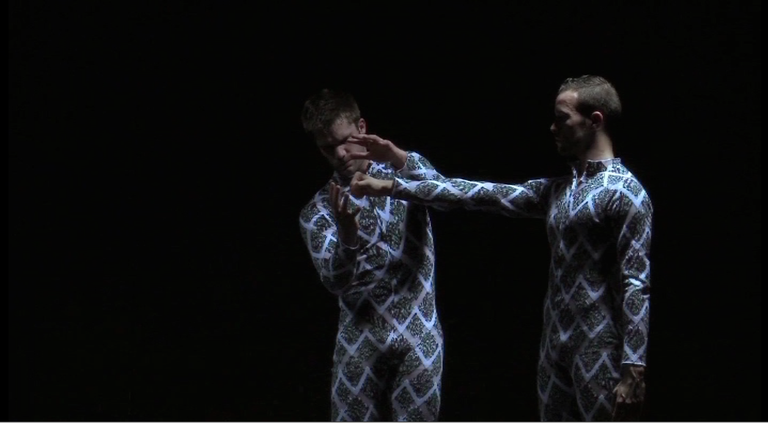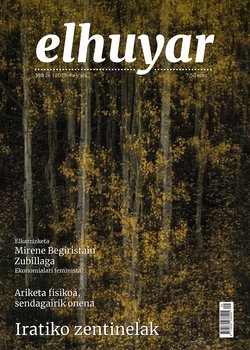Clashes of art and science

ARIANE KOEN; responsible for collide@cern: Science and art are ways of expressing who and what a human being is. They are different expressions of culture. Science, of course, has its own way of doing, its own methodology, sometimes even its own language, such as mathematics. And art is expressed through the senses: touch, taste, smell, sight... But both are part of the culture of our world. Both are expressions of who we are, of what we are.
since 2012 they have had a residency program at CERN: leading artists from different areas have the opportunity to stay at CERN for three months. There's the world's largest instrument there, the Great Proton Collider. The existence of the Higgs boson was proved there. Science is alive because, among other things, thousands of scientists from all over the world come together there. In fact, the aim of the residency program is to bring cutting-edge artists into contact with cutting-edge researchers at the same level.
The name of the program is quite eloquent: collide@cern or “clash in CERN”, matching the clashes between elementary particles and between artists and scientists.
As science and art are expressions of human culture, they share many concepts, such as imagination, reason, creativity... And so scientists and artists are not as far away as they can seem in the first blow of the eye. And they have something to learn from each other. However, the goal is not collaboration, but to inspire one another.
ARIANE KOEN; head of collide@cern: Sometimes I call the project “shock in CERN” THE OTHER great experiment. The experiment is not just that of the Great Proton Collider that proved the existence of the Higgs boson. We're doing another great experiment on more elusive topics like human imagination, invention, and creation.
CERN’s art programme was launched by Ariane Actors herself, who was in San Sebastián a few weeks ago to share this experience as a preview of the event “Mestizaje”. “Mestizaje” is also a series of similar “clashes”: clashes between literature and science. And the main sessions took place this week. The Conference is located in a specific territory: Precisely in the Frontiers of Art, Science and Humanities.
CLARA MARTIN; Ikerbasque researcher at BCBL:Being at this frontier allows scientists to generate new questions using Art and Literature to have new ideas for experiments. For example, to know more about the language, which is my field. Using works of art or literary works, we can study the language in a scientific way and extract models of the brain’s functioning when reading or listening to the language. This can’t be imagined if we don’t put ourselves at that limit.
EMMANUEL LIZCANO; expert in the philosophy of science: As I have seen in these days, there is a great difficulty to cross this border, even in some days called with the intention of crossing it. It seems that when the scientist wants to go through it, he says to the other, “that’s not so, science says this different.” Or when you find a gateway, the answer is that this is not the most interesting. I believe that what exists between Art and Science is the symbolic capacity of human beings. From the collective imagination both Art and Science are born, we can cross the border by the way of that imagination.
AMELIA GAMONEDA; Professor of French Literature at the University of Salamanca: Art and Literature deal with the relationship of the subject with the world, Science deals with the knowledge of the world. So the subject has one leg on one side of the border and the other on the other. Sometimes he puts both feet on the same side, even in science. That’s the topic of discussion these days.
Assisted by GUSTAVO A. SCHWARTZ; responsible for the event “Mestizaje”: I believe that “Mestizaje” is necessary as we want to address complex issues. We can say that in the last 200 years, science has dealt with simple issues, although they may not seem so simple. But the structure of the atom or of the galaxies is a simple matter if we compare them with the functioning of the brain. Therefore, as we want to deal with such complex issues, we need to hybridize between different disciplines.
One way in which science and art can advance can be to unite at the border between the two. The experience of CERN can be useful to penetrate this border. There the artists spend 3 months looking for inspiration.
ARIANE KOEN; responsible for collide@cern:An artist lives to create and do, will always create or will do something. The artist will need the necessary time to do the work of art, it is not possible to determine: 3 months, 4 months, maybe a year, or two days. You can't regulate that. And, you see, the consequence of these residencies is that the artist creates a work, but it will take as long as it takes.
Some of the works created as a result of the CERN headquarters are on display. For example, the work SYMMETRY transmedia, the contemporary dance show QUANTUM or the installation SUPERSYMMETRY.
Buletina
Bidali zure helbide elektronikoa eta jaso asteroko buletina zure sarrera-ontzian


